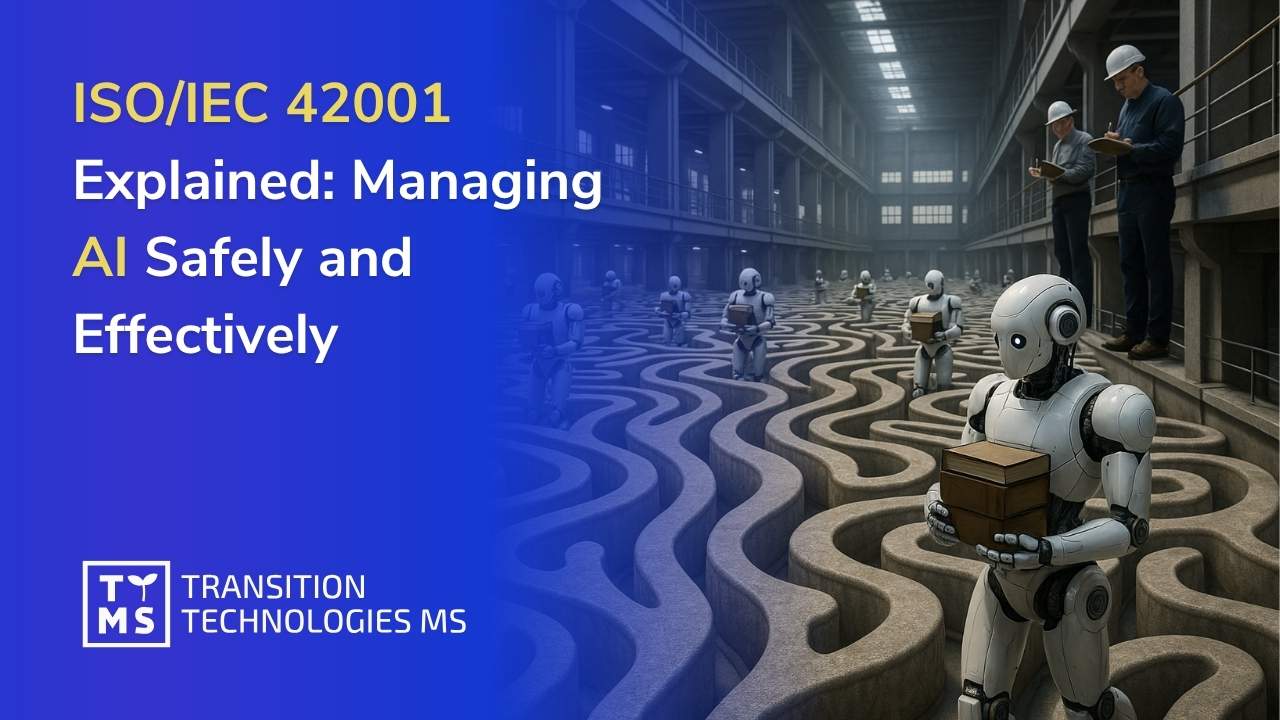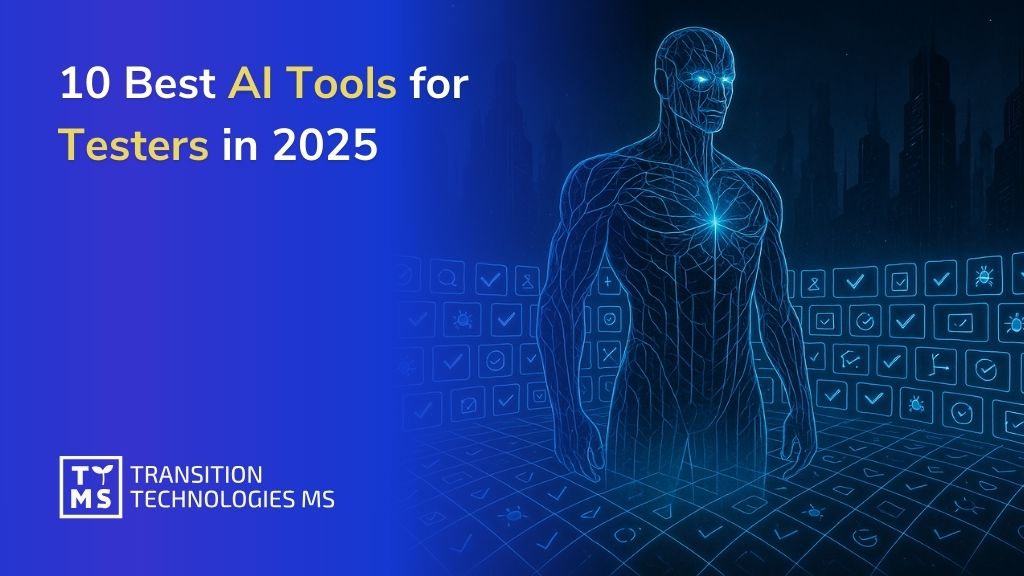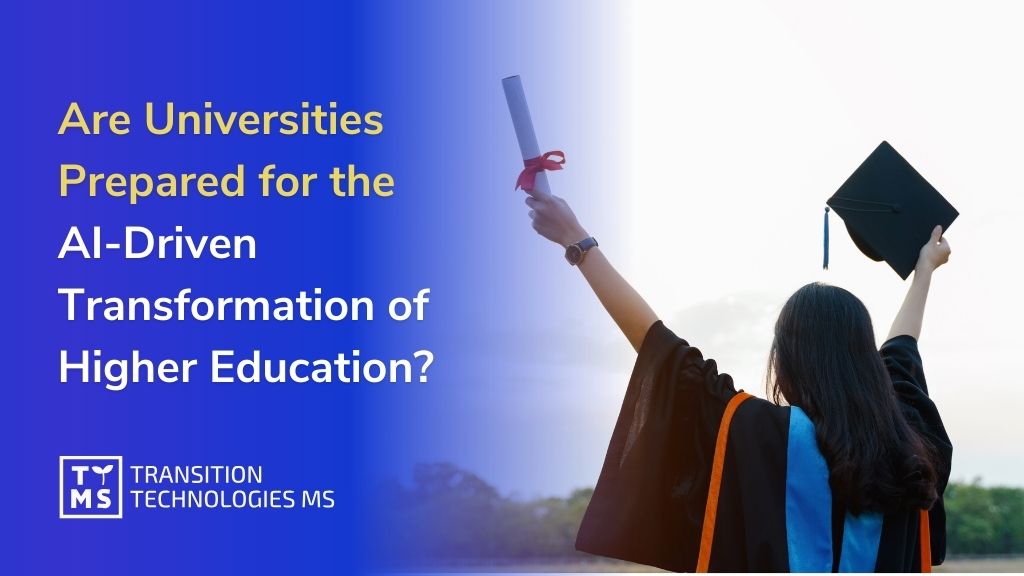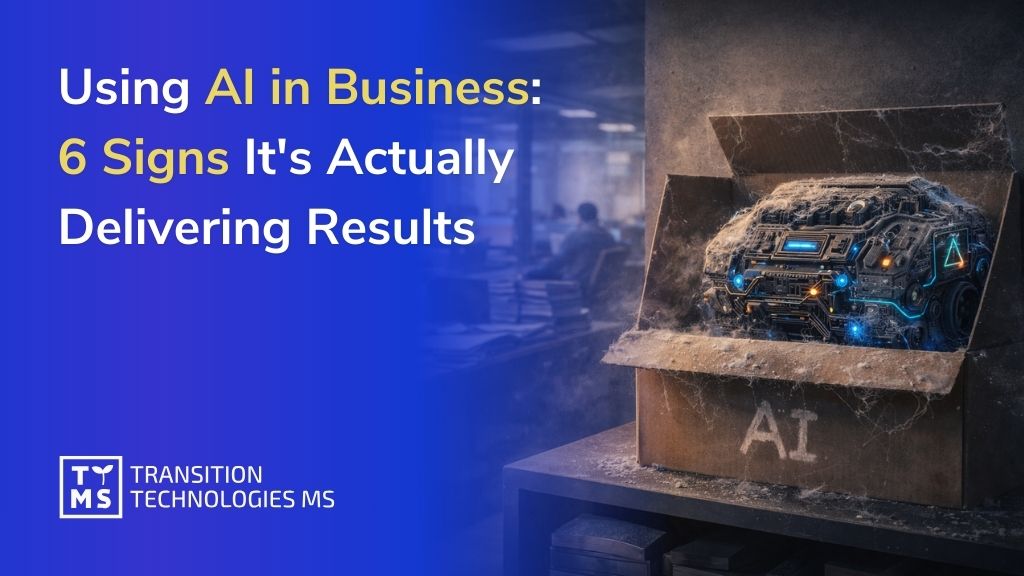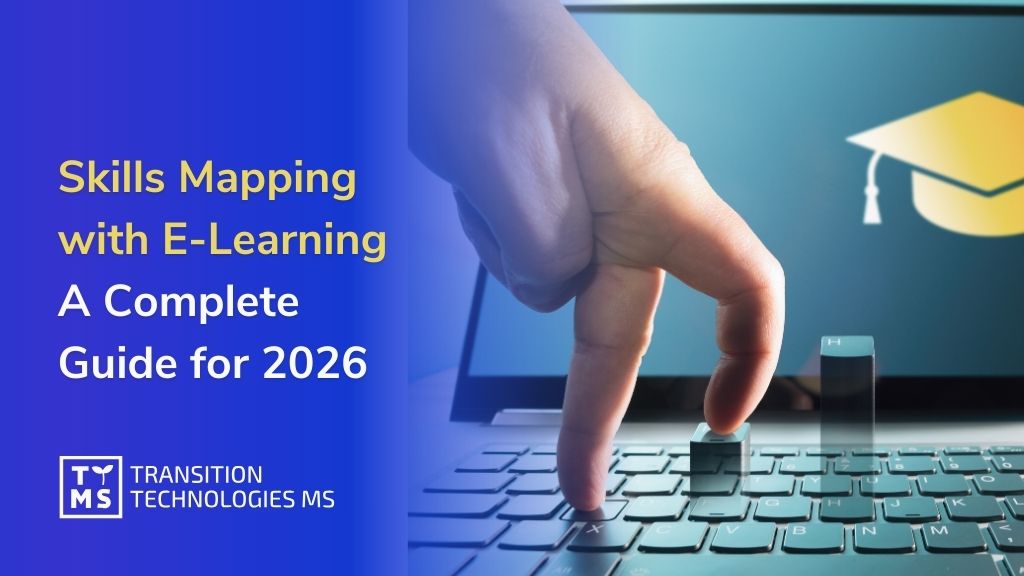“Poland will formally bid to host the Olympic Games” – these were the words we heard from Prime Minister Donald Tusk in mid-August 2024. While the target is set for 2040 or 2044, and Tusk added that “time will tell if this is a realistic goal,” we will use this as an opportunity to reflect on the future of sports. The future of sports, and certainly of the Olympics, is inextricably linked with artificial intelligence. How is AI supporting sports today? You can read about it in the article below.
What will sports look like in 2040? We don’t know for sure, but AI will undoubtedly play a major role, both in supporting athletes, coaches, referees, and organizers, as well as meeting the demands of the most discerning fans. A detailed “case study” on this topic already appeared on our blog some time ago – if you haven’t yet read my article about how AI supported the Paris Olympic Games, make sure to catch up!
How does AI support athletes, coaches and entire teams?
Artificial intelligence-based solutions are already helping to optimize training, refine tactical elements, and minimize the risk of injury. Let’s focus on a few examples illustrating where AI support for people who make a living from sports is heading – players and coaches.
How does AI support players?
Digital twin, or how to copy a heart
Based on current knowledge of anatomy, physiology and biochemistry, specialists have the ability to look into many biometric parameters of athletes and use them to predict the condition of the body, but only to a certain extent. What if we created a virtual replica of a human organ and stimulated it with training loads? This question was asked by scientists who recently created interactive, three-dimensional models of our “components”. They can be subjected to tests and experiments simulating training or competitions. Also, predictions such as “if I sleep an hour longer, will I be able to break my marathon record?” seem extremely valuable. That is why representatives of various disciplines are already using so-called digital twins (Digital BioTwin). The most famous one at the time was the American runner Desiree Linden. Scientists “copied” her heart and circulatory system to be able to check their behavior at the limit of human performance. They created a “living” computer simulation that takes input to use AI and machine learning to provide accurate predictions of how the organ might function under certain scenarios, even very specific ones (such as reduced sleep or an unusual diet). The “digital twin” technology is the work of two companies: Tata Consultancy Services (TCS), which created the “heart” of Des Linden, and Dassault Systèmes, which provided expertise in computational models.
There is no doubt that “digital twins” will also find their application in medicine. AstraZeneca is already testing the impact of cardiology and diabetes drugs on them. The idea itself is not foreign to other areas of life, where predicting processes with minimal risk is worth its weight in gold. We are talking about industry, energy, construction, transport and aviation, where a “digital twin” can be used to monitor, optimize and simulate real processes and objects. Based on technologies such as IoT, artificial intelligence, big data and computer simulations, digital twins enable precise management and prediction of potential problems.
Power Bra, or What a Footballer Wears Under His Shirt
If you happen to watch football matches and don’t turn off the TV after the 90th minute, there’s a good chance that you’ve noticed – while changing shirts – the black vests that encircle the players’ chests. They are part of advanced data analysis systems that collect information about the players’ physical parameters, such as heart rate, running speed, distance covered, or current position on the pitch thanks to GPS. The data is then analyzed by artificial intelligence algorithms that help coaches and medical staff better understand the players’ physical condition, monitor their training load, avoid injuries, and optimize preparation for matches. The leaders in the production of vests are Catapult Sports and STATSports. While the above companies focused on football, footballers from the NFL (National Football League) have also received a dedicated solution. Thanks to the combination of forces of Amazon Web Services (AWS) and the NFL, the Digital Athlete technology was created. It uses artificial intelligence and machine learning to create a comprehensive picture of the player experience, allowing teams to understand what individual players need to stay healthy, recover quickly and perform at their best. In the 2023/24 season, the technology was used by all 32 NFL clubs. The above solutions are examples of so-called wearable technology, i.e. technology that athletes wear and collect the necessary data. It should be noted here that processing it without the help of artificial intelligence systems would be virtually impossible. AI interprets this very complex data, discovers patterns and provides insights that analysts are not able to capture so efficiently and quickly. Devices monitoring and analyzing player parameters are springing up like mushrooms after the rain. Some of the more interesting ones are worth mentioning: Intel 3D Athlete Tracking (3DAT), which uses AI and cameras to analyze athletes’ movements in real time, enabling detailed monitoring and optimization of technique, and the WHOOP band, which creates recommendations for training and rest based on collected physiological data.
AI algorithms against injuries
In the NBA (but also in the NFL hockey league and football) for several years, artificial intelligence algorithms have been successfully used to predict the risk of injuries. Advanced machine learning models are used to analyze data on the health and performance of players, including injury history, game intensity, time spent on the pitch, and other physical metrics. An example of such a system is METIC (Multiple bidirectional Encoder Transformers for Injury Classification), which uses deep learning technology to analyze sequences of past matches and injuries, predicting the risk of future injuries. Models such as METIC work by processing large data sets using transformers (a technology originally developed for natural language processing) to more accurately predict injuries. Another example is Zone7, which works with sports teams to provide AI algorithms that predict injuries based on data from devices worn by players, such as GPS and accelerometers. Thanks to this data, it is possible to predict, for example, the risk of Achilles tendon rupture, which allows coaches and medical staff to take preventive measures, such as regeneration, reducing the intensity of training or so-called pre-rehabilitation exercises (anti-injury). Such solutions allow teams not only to minimize the risk of injury, but also to optimize player performance, which can have huge financial and sporting significance. In the NBA, losses due to player injuries reach tens of millions of dollars per year.
Artificial Intelligence, Natural Emotions – How Does AI Detect Them and Use Them to Improve Results?
Can AI feel emotions? Emotions are a complex set of physiological and psychological responses to external stimuli. Machines do not have consciousness or even the biological basis for having “feelings”. However, AI can be taught to read these emotions based on behavioral expressions. This assumption was made by the creators of software – researchers from the Technical Institute in Karlsruhe and the University of Duisburg in Germany – used to recognize the emotional states of tennis players. Their body language during matches is analyzed using convolutional neural networks (CNN). Convolutional neural networks are mainly used to analyze grid-structured data, such as images. They work by processing data in a hierarchical manner, using convolutional layers to automatically recognize important features such as edges, shapes, and patterns, which are then used for classification or further analysis.
Why do tennis coaches need to read players’ emotions?
Based on this, the coach can individualize training, respond more quickly to negative emotions such as frustration or stress, to keep the player focused during the match. Technology can also help prevent burnout by monitoring emotions and adjusting training load. This allows the coach to analyze how emotions affect performance, which supports the creation of more effective training and match strategies.
Can AI read emotions better than humans?
Let’s look at the numbers: the AI model achieved 68.9% accuracy, which is a similar result. This is an excellent result, which means that the “emotion reading” aspect can be simply outsourced to AI.
From Elite Sports to Everyday Use
Many solutions based on AI algorithms, and tested in competitive sports, have found their application in amateur sports. It has been a long time since fans of running, cycling or team sports have been taking advantage of training innovations, and most often equipment innovations. Thanks to the dynamic rapid development of artificial intelligence and “wearable” technology, i.e. devices worn by athletes that collect and analyze data in real time, many solutions have reached “home”, allowing amateurs to take a more advanced approach to training and monitoring progress. One of the key examples is the development of mobile applications for monitoring physical activity, such as Strava, Nike Run Club, or Garmin Connect. These applications, thanks to integration with devices such as smartwatches and fitness bands, allow amateurs to track parameters such as speed, distance, heart rate or calories burned. Additionally, advanced AI algorithms analyze data to provide personalized training advice, plan regeneration and avoid overtraining. An example is the WHOOP wristband, which uses biometric data to advise users when it is best to train and when to rest.
Another example is motion analysis techniques, originally used in sports such as track and field or football. In projects such as Intel 3D Athlete Tracking (3DAT), AI algorithms analyze athletes’ movements in real time, allowing them to improve their technique and optimize movement. Today, amateurs can use similar technologies, for example through running analysis applications such as RunScribe or Stryd, which help improve their technique and minimize the risk of injury. The same is true of the solution from Zone7 (Zone7 started out working with professionals), which, using data from GPS devices and accelerometers, predicts the risk of injury and suggests changes to training intensity.
An interesting application worth taking a look at is Swing Vision, available for amateur tennis players who are also… iPhone users. Players can monitor statistics such as the location of shots, ball speed, precision, and length of rallies. In addition, the app offers a video replay function with analysis of technique, footwork and match strategy. Thanks to this, players can improve their technique, increase the effectiveness of their strikes and better prepare for sparring and training. The accuracy of the app is impressive – it reaches 97 percent.
All these technologies, which were originally reserved for top-level athletes, are now available to a wide group of users. Thanks to them, amateur trainers can benefit from precise data that was available only in the most advanced training centers a few years ago. This is proof of how AI is changing sports – from competitive to amateur, providing everyone with access to modern tools that improve performance and health.
From the Stadium to the Boardroom – How TTMS Brings the Power of AI to Business
The use of artificial intelligence in sports is just one of many areas where AI is transforming our lives and work. At Transition Technologies MS (TTMS), we have been developing AI-powered solutions for years, supporting businesses in areas such as content analysis (AI4Content), knowledge management (AI4Knowledge), e-learning (AI4E-learning), content localization (AI4Localisation), and legal process automation (AI4Legal). As an expert in artificial intelligence, we help clients design and implement tools that deliver real business value – from streamlining decision-making processes and optimizing costs to increasing user engagement.
Some examples include an AI-powered system for document recognition and classification in a leading pharmaceutical company, automated content classification and improved document searchability, or personalized e-learning powered by AI. We also supported the global digital coaching transformation at Borussia Dortmund by developing the Coachbetter app – a comprehensive platform for AI-assisted training and player development. Technologies once reserved for elite athletes are now available to the business world – thanks to TTMS. If you’re looking for a partner to help you unlock the full potential of artificial intelligence, we’re ready to support you at every stage of your transformation.
How does VAR work?
VAR (Video Assistant Referee) uses video technology and AI-powered tools to assist referees in making key decisions during matches. AI helps analyze video feeds from multiple cameras to highlight critical incidents such as goals, penalties, and offsides. The AI system processes the data quickly to assist referees in reviewing the play in real-time, but the final decision is always made by the on-field referee.
How does Hawk-Eye work?
Hawk-Eye uses AI algorithms to track the ball’s trajectory in sports like tennis, football, and cricket. The system employs cameras that feed data into AI models, which then calculate the ball’s exact position and predict its future movement. This enables precise decisions about whether the ball was “in” or “out,” and the AI ensures fast and reliable results, which are essential for fair play.
What features does SwingVision offer?
SwingVision utilizes AI to analyze tennis matches by tracking ball speed, shot placement, and rally length. The AI-powered app processes video footage to provide detailed insights into player performance, footwork, and match strategy. With AI-generated video replays and real-time feedback, SwingVision helps players refine their techniques and improve their game more efficiently.
What is a “digital twin” and how does AI play a role?
A “digital twin” is an AI-powered virtual replica of a physical body or organ. In sports, AI models use real-time data from athletes to simulate their physical responses to different training regimens or scenarios. AI helps in predicting potential outcomes, such as how an athlete’s heart will respond under intense strain, allowing for more personalized training programs and injury prevention strategies.
How does WHOOP work?
WHOOP is a wearable device that collects physiological data like heart rate, sleep patterns, and strain. AI analyzes this data to provide personalized insights and training recommendations. The AI engine tracks trends over time, advising athletes on when to push harder or when to rest, helping them avoid overtraining and optimize recovery for peak performance.
How does IBM Watson for Tennis work?
IBM Watson for Tennis leverages AI to analyze vast amounts of match data, including player performance, statistics, and fan engagement. AI algorithms provide real-time insights, predict match outcomes, and even offer strategy suggestions based on player tendencies. Watson’s AI capabilities help both players and coaches make smarter, data-driven decisions during matches.
How does Wyscout utilize AI?
Wyscout uses AI to analyze football player performance by processing game footage and player statistics. AI algorithms break down player movements, tactical decisions, and match patterns, providing in-depth analysis for scouts and coaches. This AI-driven scouting platform helps clubs identify talent, assess skills, and make informed decisions about player transfers and team strategies.
How does METIC work?
METIC (Multiple bidirectional Encoder Transformers for Injury Classification) uses AI to predict the risk of injuries in sports like basketball and football. AI-powered deep learning models analyze past injury data, match intensity, and player performance to forecast potential injuries. This allows coaches and medical teams to adjust training loads and reduce injury risks based on AI-generated predictions.
